Clutch installation(6-spd)
Clutch Installation
(6-SPEED)
By Chris Bergemann @ HorsepowerFreaks.com
I unfortunately seemed to have been the test bed for many different aftermarket clutches, all which have
failed prematurely. I have taken my transmission out way too many times.Here are some examples of clutches that will work at different horsepower levels.
Clutch Kits Engagement (1=stock – 10=on/off switch Drag Racing Use 290-350rwhp Toyota stock Pressure plate and Disk 1 – light pedal feel, nice smooth engagement 350-500rwhp ACT HD Pressure Plate w/Stock Disk (max 550rwhp) 1 – medium pedal feel, nice smooth engagement Yes
RPS “MAX” Pressure Plate w/Stock Disk (max 500rwhp) 1 – medium pedal feel, nice smooth engagement Yes
TRD Single Disk (max 500rwhp) 1 – medium pedal feel, nice smooth engagement Yes
500-650rwhp ACT HD Pressure Plate w/HPF Disk 3 – medium pedal feel, smooth but short (1″) engagement Yes
RPS “Max” Pressure Plate w/RPS sprung Disk 3 – medium pedal feel, smooth but short (1″) engagement RPS or ACT Pressure Plate w/AZ Disk 7 – medium pedal feel, rough and short engagement below 2,000rpm Yes
South Bend Pressure Plate w/Dual Friction Disk 4 – light pedal feel, smooth but short (1″) engagement Yes
RPS Carbon Carbon Twin Disk 5 – medium-heavy pedal feel, a little rough and short (1″) engagement Yes
TRD Twin Disk 8 – medium pedal feel, very short and harsh engagement OS Giken Twin Disk 10 – heavy pedal feel, very short and harsh engagement – on/off switch Exedy Twin Disk 4 – light pedal feel Yes 650-900rwhp ACT HD Pressure Plate w/HPF Bronze Disk 3 – medium pedal feel, smooth but short (1″) engagement Yes
RPS Carbon Carbon Twin Disk 8 – light pedal feel, rough and short (0.5″) engagement Yes
OS Giken Triple Disk 10 – heavy pedal feel, very short and harsh engagement – on/off switch HKS Triple Disk 10 – light pedal feel, very short and harsh engagement – on/off switch Tilton Triple Disk 1 – light pedal feel, medium tough engagement, very expensive Yes
WOTM Clutch w/RPS PP 7 – medium pedal feel Yes
Exedy Triple Disk 1 – light pedal feel, mild engagement, not yet proven Yes
900rwhp+ Tilton Triple Disk 1 – light pedal feel, very smooth and easy engagement, very expensive Yes
HPF Feramic Clutch w/ACT PP 4 – medium pedal feel, very smooth and easy engagement Yes
Shown below is an ACT Heavy Duty Pressure plate and various disks. ACT Pressure plates are yellow, RPS Pressure plates are
blue. Disks can either be sprung or unsprung as shown in the picture below. A sprung disk has springs in the disk to provide
a cushioning effect to minimize drive-train stress on engagement. It’s best to run a sprung disk if you’re going to use a
lightened flywheel. The stock “dual mass” flywheel has cushioning built into the flywheel, however it’s heavy 34lb weight
causes an approximate 20rwhp loss across the entire RPM range.
Show below from left to right is the stock flywheel, pilot bearing, RPS clutch disk,
throw out bearing and Toyota pressure plate.
Fidanza makes a reasonably prices lightened flywheel that will make a noticeable increase in power in your Supra. It comes at
the expense of tranny rattle between 800rpm and 1,100rpm. I’ve set my idle to 1,350 and there is no rattle. You can also
press the clutch pedal in when stopped to avoid this rattle as well. This tranny rattle can sound as bad as a diesel truck,
however on some cars it is barely noticeable.If you wish to re-use your stock flywheel, don’t make the mistake I original did. I had the flywheel “wet” turned. When
they “wet” turned it, they used radiator fluid to keep the cutting process cool. This sent
tons of metal shavings and fluid down into the rubber part of the flywheel. Of course, I installed it later, and found
out that the rubber in the flywheel is actually used for something. Go figure. If you want to re-use your original flywheel
you need to ensure that the rubber in it is still good. Once the transmission is removed (as described below)
make sure that the rubber is still good, by attempting to turn the flywheel more than 2 inches either way while it is bolted
to your crankshaft. If you can’t, then
the rubber is still good and you may be able to re-use it. Then you need to have a shop turn it “dry” (no fluid),
and make sure you cover all interal areas with duct tape or something that can handle the heat, so that nothing gets down into that rubber.Prior to putting that nice polished looking flywheel and pressure plate in your car, make sure you sand the metal with some
100 grit sand paper to ruff it up. This will help the surfaces mate once installed.Now, if you want to do everything the easy way, get all the tools shown in the picture below. I apologize for the quality
of these first two pictures. They get better. From left to right are: breaker bar (hopefully won’t be needed), long and short screw
drivers, a bunch of metric sockets and wrenches from 10mm to 17mm, high power air gun (add 2 hours and 2 rounded bolts if
you don’t have this), pilot bearing puller ($39, a must to get that little pilot bearing out), pipe wrench (yes a pipe wrench),
sideways rachet air tool (not necessary, only if lazy), regular jack (a tranny jack is not necessary) and 4 jack stands (can get by with 2 if that’s all you have).
To make life easy, I always jack up the car fairly high, and put it on 4 jack-stands. The sides of the car need to be atleast
one foot in the air if you wish to pull the tranny out the side (recommended). If you only have 2 jack-stands, use them to support the front of the
car.
First, disconnect the negative side of the battery. (As the starter will be taken out later)
Nextwe need to dismantle the shifter, so the transmission can be lowered. Simply pull up on the center console as shown
below, and disconnect all the attachments to it.
Take the shifter knob off. Undo the 4 bolts (10mm), remove metal bracket and pull the rubber up over the top.
Now, crawl under the car, and remove the O2 sensor from the downpipe (or catalytic converter pipes). There are 2 12mm bolts holding it on.
When you get it out, do not touch the part of the O2 sensor that was previously inside the exhaust pipe.
Take off the downpipe (or catalytic converter) which ever one you have by removing the 2
bolts connecting it to the exhaust manifold (Note the picture shows Rod Millen downpipe and a Greddy exhaust).
(use either one 14mm wrench and an air gun w/14mm socket & extension, or 2 14mm wrenches) Hang on to the exhaust
manifold when the bolts are removed so it doesn’t hit the ground hard.
Now remove the 3 14mm bolts connecting it to the header, and the one bolt “if used” connecting it to a bracket.
Use 2 extensions, and an air gun. 6 sided
sockets are preferable to 12 pt ones, as they won’t round off the bolts if you don’t get them on just right.
The downpipe is much easier to take off then the catalytic converter because there is more room to get the
extensions through (the downpipe is shown in the picture below). If you don’t have an air gun for this one, I’m sorry.
Now remove the metal tray that is above the exhaust, by removing the 4 10mm bolts holding it in place. This will expose
all of the driveline you need to see. Put the transmission in gear, and set the parking brake. Now, use a pipe wrench to
remove the large nut on the driveline. The bottom of the wrench should be pushed from driver’s side to passenger’s side
to loosen the nut. Then remove the two bolts holding the rear of the 2′ driveline. Now pull the rubber back where the
large nut was, and mark the axle and the splines so you can line them up the same when when installing. Also, mark the
front of the drive axle where it connects to the tranmission yolk.
Now remove the 4 14mm bolts on the front of the drive axle with a 14mm wrench. Use the parking brake and transmission
shifter to allow the driveline to turn and to keep it from turning. (Note, the rear wheels must be in the air for this to occur).Now remove the transmission crossmember by removing the 4 14mm bolts holding it up. The transmission will drop down about 3
inches once this is removed. Now, pull the driveline out.
Now remove the electrical connectors going to the transmission. There is one connector on each side of the transmission.
On the side of the connector going to the car, unhook it from all the clips affixing it to the transmission.Now remove the clutch linkage. Remove the two bolts holding the clutch cylinder to the transmission, and remove the bolt
holding the ground wire, and clutch line to the transmission. Note: you do not need to remove the C-clip.
Now remove the starter. First disconnect the black electrical connector. Then remove the bolt holding the positive
cable to the starter. (Did you remember to disconnect the battery?) Now remove the 2 14mm bolts holding the starter to the
transmission. They are near the top of the transmission, and the best way to take them out is to use a 14mm socket, 4 extensions and
an air gun.
Now remove the two black viewing covers each held by 2 12mm bolts, on the bottom of the tranmission towards the front of the car.
Removing those will allow you to get at the clutch.Inside those two holes created once the covers are removed, you should be able to see the back
of the pressure plate. That pressure plate is held to the flywheel by 6 12mm bolts. In between the pressure plate and
the flywheel is the clutch. If you are going to reuse the pressure plate, flywheel and clutch, mark a white line, so
you can line them up later.Remove the 6 bolts holding the pressure plate to the flywheel. Loosten them a little at a time. When re-installing
later, make sure you tighten them a little at a time, working your way around the pressure plate. You will need that
big screw driver to turn the clutch so you can get at the other bolts. I use the brute force method, and simply push.Once you have removed the 6 bolts, pull the pressure plate back, and make sure it is disengaged from the flywheel. You
should be able to spin it by hand.Important: Do not confuse these 6 12mm bolts with the other 12mm bolts when installing the clutch later.
They look alike, except the pressure plate
bolts have a “7” on the head of them. If you try to put the other 12mm bolt in the pressure plate, and tighten it,
you will break it off in your flywheel. Trust me on this one, I know by experience.Now we’re ready to remove the transmission. Remove the 3 14mm bolts on the bottom of the transmission where it
is bolted to the engine. 2 are facing the front of the car, one is facing the back of the car.Now, remove all of the big 17mm bolts except one around the transmission housing. Leave one in there so the tranny doesn’t
fall. Then, put a jack under the transmission, making sure it is holding the transmission, but with no upward force applied and
remove the last 17mm bolt. The best way to do this is with a 17mm
socket, 4 extensions and a high powered air gun. (Believe it or not, with this method, I can take all the 17mm bolts
out in 2 minutes) The transmission should easily come apart from the engine. If it doesn’t, there’s probably still
a bolt left to remove. Now, lower the transmission to the ground, and carefully move it out from underneath your
car.Now, its time to take off the flywheel. Use a 12 pt 14mm socket to remove the 8 flywheel bolts. I strongly recommend
using an air gun (Without an air-gun you will need to use some device to keep the engine from turning.)Now, remember that strange tool in the 2nd picture next to the pipe wrench. That’s a pilot bearing removal tool. You
will need this to remove the pilot bearing shown in the center of the next picture. If you leave this bearing in.. as I
did many times, you may get premature clutch failure, and prolonged clutch chattering.While you’re here, hammer the new pilot bearing into the flywheel. Make sure it goes in as far as possible.
There’s a fork in the side of your transmission that holds your pressure plate in place. It is what moves when
you press your clutch in. Pull this fork out by hand. Wiggle it until it comes out.
Pull the pressure plate and clutch out of the front of the transmission. It should slide off once the fork is removed. There are two C clips
holding the pressure plate to the throwout bearing and sleeve. Remove the C-clips and the old throw-out bearing (remember
how it goes back together)Did you roughen up the new pressure plate and flywheel? (use 100 grit sandpaper to do this), then clean both with brake
cleaner. It is imperative that no oil/grease/dirt is on the contact surfaces of the flywheel, pressure plate or clutch
when assembled.Install the new throw-out bearing onto the new pressure plate using the old sleeve, C-clips
and circular disks. Note: one of those disks is not flat. it’s supposed to be that way.Put some extreme pressure, high-temp grease on the wear parts of the fork (be careful not to put on too much,
and not to get the grease any where the clutch might contact), and install the new pressure plate and fork
on the transmission.Carefully move the transmission under the car, and install in the reverse order.
Points to remember on installation:
Do not get anything on clutch and clutch contact surfaces. Do not use the wrong
12mm bolts on the pressure plate or they will break off in the flywheel. They should be marked with a “7”. Install
pressure plate bolts evenly and a little at a time working your way around. Line up marks on driveline when installing.
Do
not squish wires between transmission and engine (I know this one from experience also).
Do not overtighten positive
cable bolt on starter (starter housing will break). Make sure all rubber boots are firmly around whatever they are
protecting, or things will rust.On all aftermarket disks, the cone section faces the rear of the car. This is opposite of the stock disk shown in the picture.
If you can’t get your car in gear after installing your new clutch, you may need to adjust your clutch pedal. Do this
by loosening the nut near the top of your pedal, and twising the metal bar, until the clutch engagement feels
comfortable for you.Make sure you drive slowly for 200 miles (on new RPS clutches) or 500 miles (for other clutches) to break it in, and
seat the mating surfaces.
Torque #:
- Flywheel to Crank: Tighten to 36 ftlb in
a crossover pattern, then tighten each bolt another 90 degrees again in
pattern. If you are doing this with an aluminum flywheel, make three
passes at 36 ftlb before the 90 degree tighten, the aluminum will compress a
little (AMHIK).- Pressure plate to flywheel: 14 ftlb (I recommend 20ft-lbs or more). (I normally use a 12mm little wrench and tighten as tight as I can. If these back out, your clutch will be toast within a few miles)
- Transmission to engine: 17mm head bolts,
53 ftlb; 14 mm head bolt, 29 ftlb.- Starter terminal is 48 inlb (Notice the
units!)- Starter bolts: 29 ftlbs
- Release Cylinder: 9 ftlbs
- Clutch housing covers: 9 ftlbs
- Center support bearing mounts: 36 ftlb
- Intermediate shaft to transmission bolts:
41 ftlb- Rear transmission mount inside bolts: 10
ftlb- Rear transmission mount outside bolts:
19 ftlb- Shifter pivot bolt: 14 ftlb
- Shifter plate bolts: 69 inlb
- Crossmember bolts: 9 ftlb
Comments/suggestions? Email me

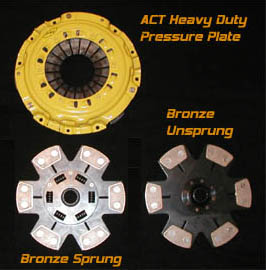
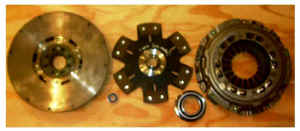
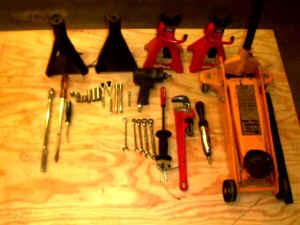
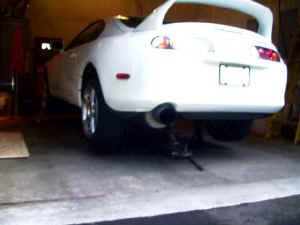
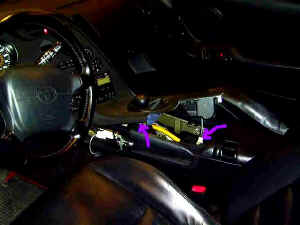
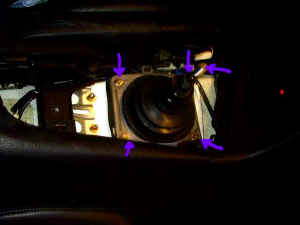
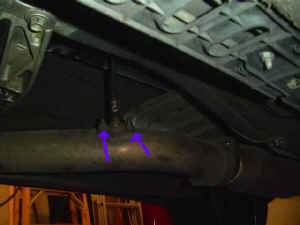
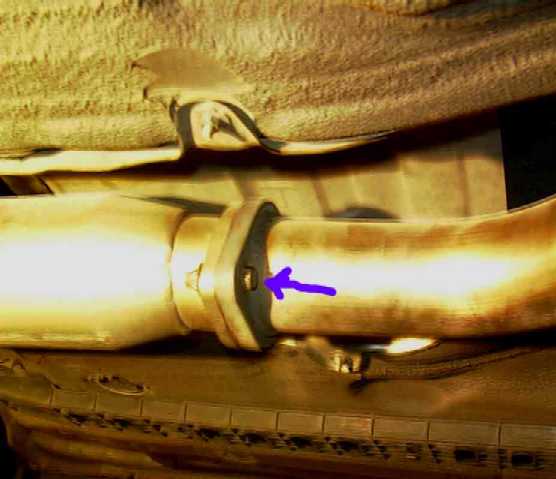
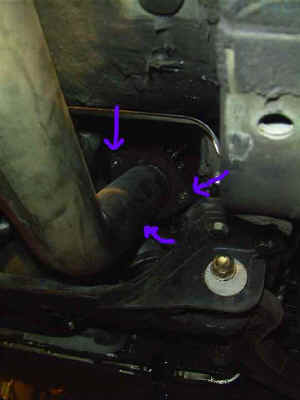
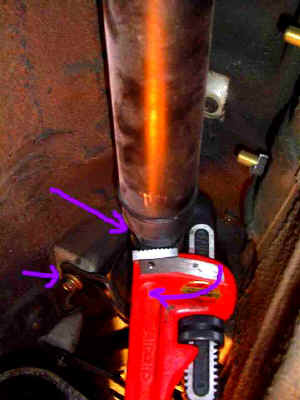
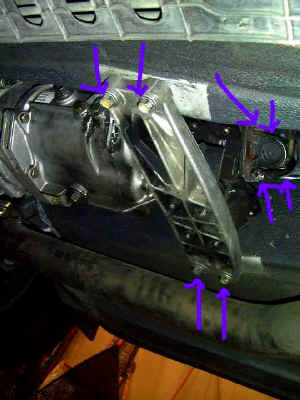
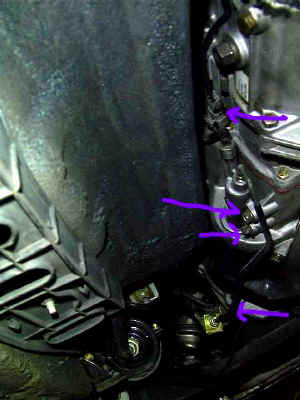
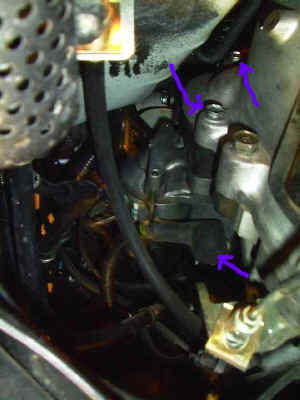
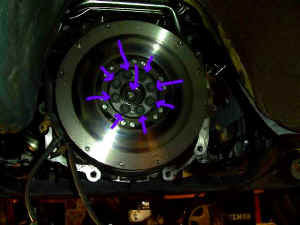
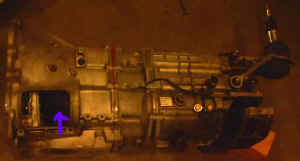
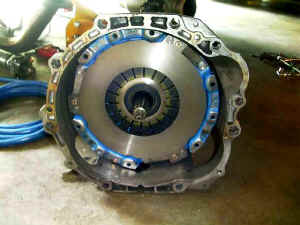
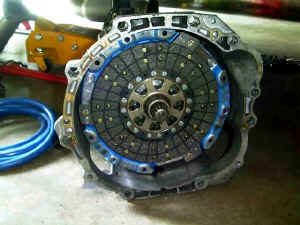
Where’s the rest of this article? It used to have the directions for doing the work to change a clutch!
Thanks for the heads up.
I’ll get this checked out asap.
Thanks for making me aware of this issue.
Aron